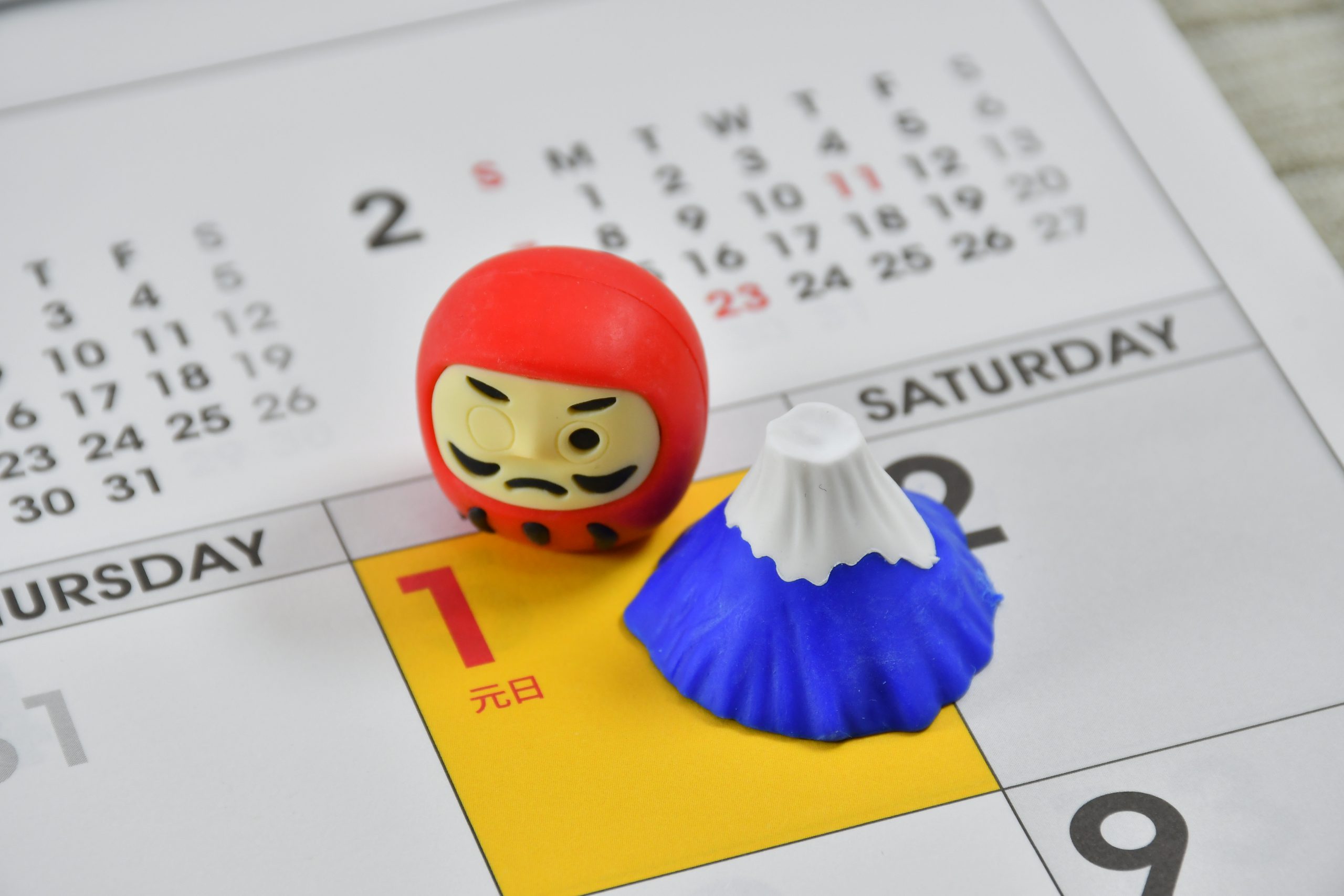The solar calendar was introduced to Japan for the first time by Western countries during the late 19th century. Prior to this, the nation of Japan used the lunisolar calendar system. Within this old calendar system, each month was given a unique name and kanji with diverse meanings. The meanings of these names is strongly tied to Japanese history and culture. Occasionally, these old calendar names are still used in the day-to-day, making it both helpful and fun to learn about these month names prior to your next trip to Japan.
List of Japanese month names:
| Month | Modern name | Old name |
| January | ichi-gatsu 一月 | mutsuki 睦月 |
| February | ni-gatsu 二月 | kisaragi 如月 |
| March | san-gatsu 三月 | yayoi 弥生 |
| April | shi-gatsu 四月 | uzuki 卯月 |
| May | go-gatsu 五月 | satsuki 皐月 |
| June | roku-gatsu 六月 | minazuki 水無月 |
| July | shichi-gatsu 七月 | fumizuki 文月 |
| August | hachi-gatsu 八月 | hazuki 葉月 |
| September | ku-gatsu 九月 | nagatsuki 長月 |
| October | juu-gatsu 十月 | kannazuki 神無月 |
| November | juuichi-gatsu 十一月 | shimotsuki 霜月 |
| December | juuni-gatsu 十二月 | shiwasu 師走 |
- 1. Mutsuki (睦月) / January
- 2. Kisaragi (如月) / February
- 3. Yayoi (弥生) / March
- 4. Uzuki (卯月) / April
- 5. Satsuki (皐月) / May
- 6. Minazuki (水無月) / June
- 7. Fumizuki (文月) / July
- 8. Hazuki (葉月) / August
- 9. Nagatsuki (長月) / September
- 10. Kannazuki (神無月) / October
- 11. Shimotsuki / November (霜月)
- 12. Shiwasu (師走) / December
- Japan Wonder Travel Tours
- Other articles you might like
1. Mutsuki (睦月) / January

Mutsuki is the Japanese old calendar name for January, where “Mu”(睦) refers to a good relationship, especially among family members. Most people associate the month of January with New Year’s Day, a time in which families tend to stay close and spend time together. Subsequently, the name Mutsuki was formed around this idea of family coming together throughout this time.
2. Kisaragi (如月) / February

February is referred to as “Kisaragi” in the old Japanese calendar system. The kanji “如” is rarely used and can be substituted for “衣更”. These two kanji have the same reading as “如” while simultaneously explaining the original meaning of the name Kisaragi. The direct meaning of “衣” is clothing, whereas “更” refers to further demand for something. Altogether, this name roughly translate to “month when you still need several layers of clothing to help you stay warm”. The reasoning behind this name relates to the fact that winter is not completely over. This reflects how people back in the old days were aware of the importance of protecting themselves from the severe weather.
3. Yayoi (弥生) / March

Yayoi is another name for March, which was also used in the historic Yayoi period (B.C. 10 – A.D. 3). “弥” has a meaning roughly equivalent to “finally”, indicating that March is the time when plants and flowers finally start to sprout. This name celebrates the arrival of spring and the emergence of new life in nature!
4. Uzuki (卯月) / April

Uzuki refers to April in the old Japanese calendar. “卯” is said to come from “卯の花” (U-no-Hana), a symbolic white flower that blooms in spring. Another theory suggests that “卯” was originally “植”, which has the same pronunciation. “植” refers to “rice planting”, which takes place each spring throughout Japan!
5. Satsuki (皐月) / May


May is known as “Satsuki”, with a similar meaning to that of April, as May is also often associated with the planting of rice. “皐” is an alternative kanji for “早苗”, which refers to young rice seedlings.
“Satsuki-bare” (五月晴れ) is a common expression that is often used to describe the occasional sunny days in the rainy season called Tsuyu (梅雨) from June through mid-July in Japan.
6. Minazuki (水無月) / June
If you have some knowledge of Kanji, you might guess “水無月” means the month without water, but it is actually the opposite! “無” is generally used to express a lack thereof whenever something is missing, but in this scenario it means that June is the month of rice fields filled with water! To remember the confusing meaning of this name, you could think of Japan’s rainy season “梅雨” that starts mid-June and goes for about a month. This time of the year is also one of the best time to see the beautiful hydrangeas bloom throughout Japan. Be sure to check them out at sites like Hasedera Temple in Kamakura, also known as the Hydrangea Temple.
7. Fumizuki (文月) / July
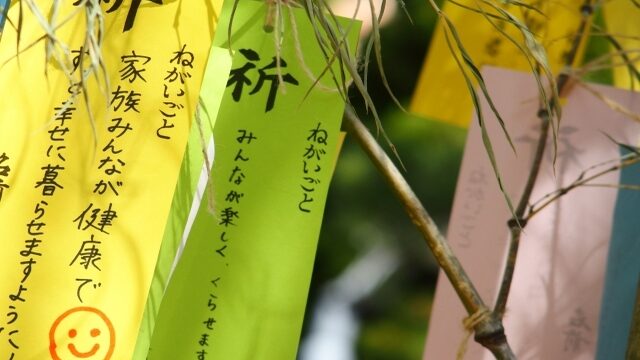
Fumizuki stands for July, when Japan holds a special annual event known as Tanabata (七夕). This festival falls on July 7th, and is celebrated with giant bamboo with slips of colorful paper attached to it. Celebrants then write wishes onto a slip and attach them to the bamboo. This explains the use of the kanji “文” (meaning letter, sentence, or writing). Althoug other Asian countries like Korea and China also participate in Tanabata, this specific custom is unique to Japan.
8. Hazuki (葉月) / August
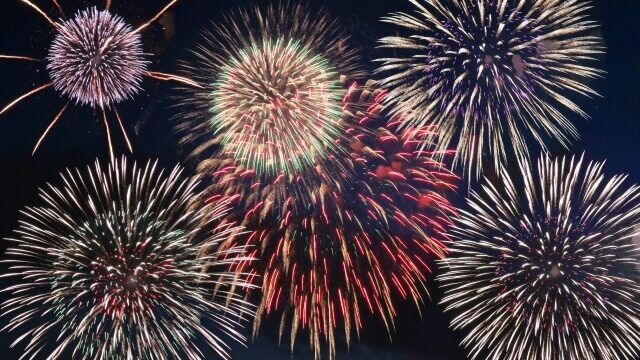
When summer comes to an end, green leaves (“葉” in Japanese) start to fall from trees and change colors for the season of fall. Due to the slight difference in dates between the old and new calendar systems, Hazuki refers to the beginning of fall in August. Some some say it is best to avoid traveling to Japan during this time of year due to the extreme summer weather, but it is also arguably the best time to join in on memorable events such as summer festivals and fireworks.
9. Nagatsuki (長月) / September
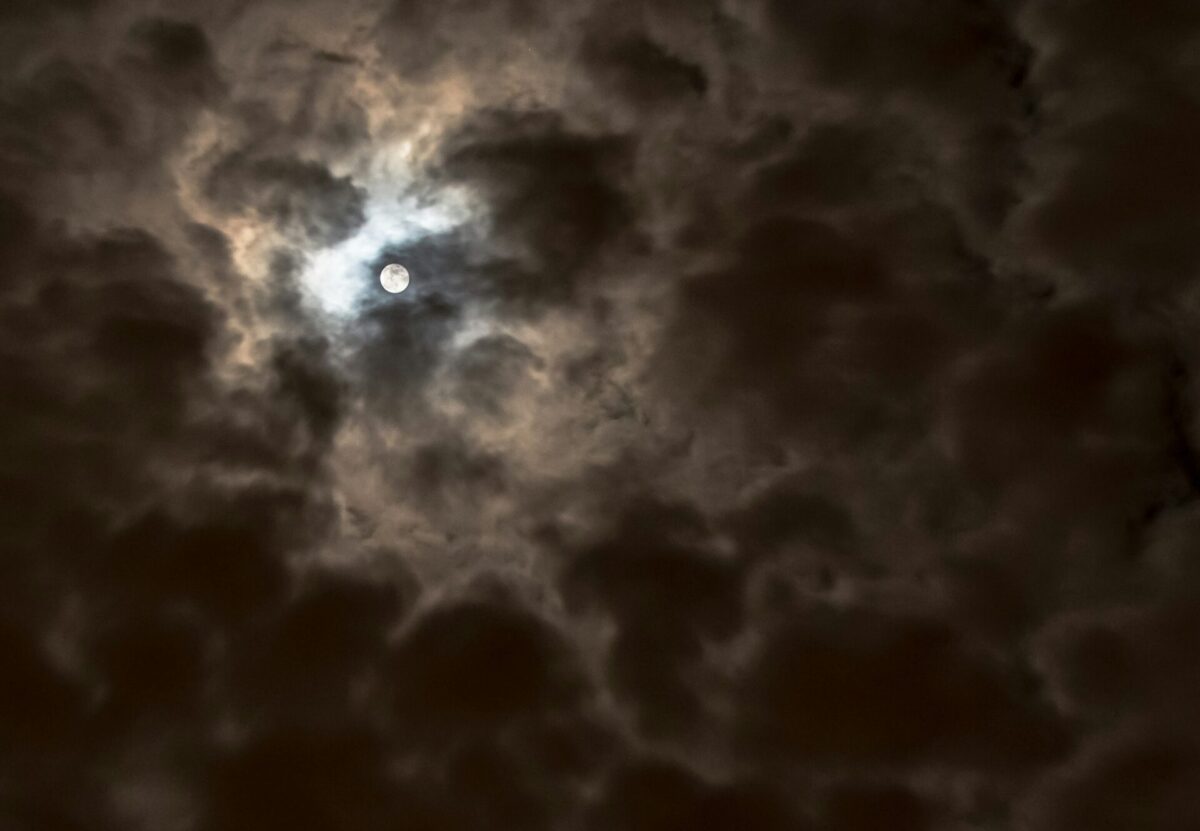
The arrival of fall brings long nights as days get shorter towards winter, hence why “長” (long) was used to describe September. During this time of longer nights, Japan partakes in a unique custom known as “Otsukimi” (お月見) during this time of year, which literally means moon viewing.
10. Kannazuki (神無月) / October
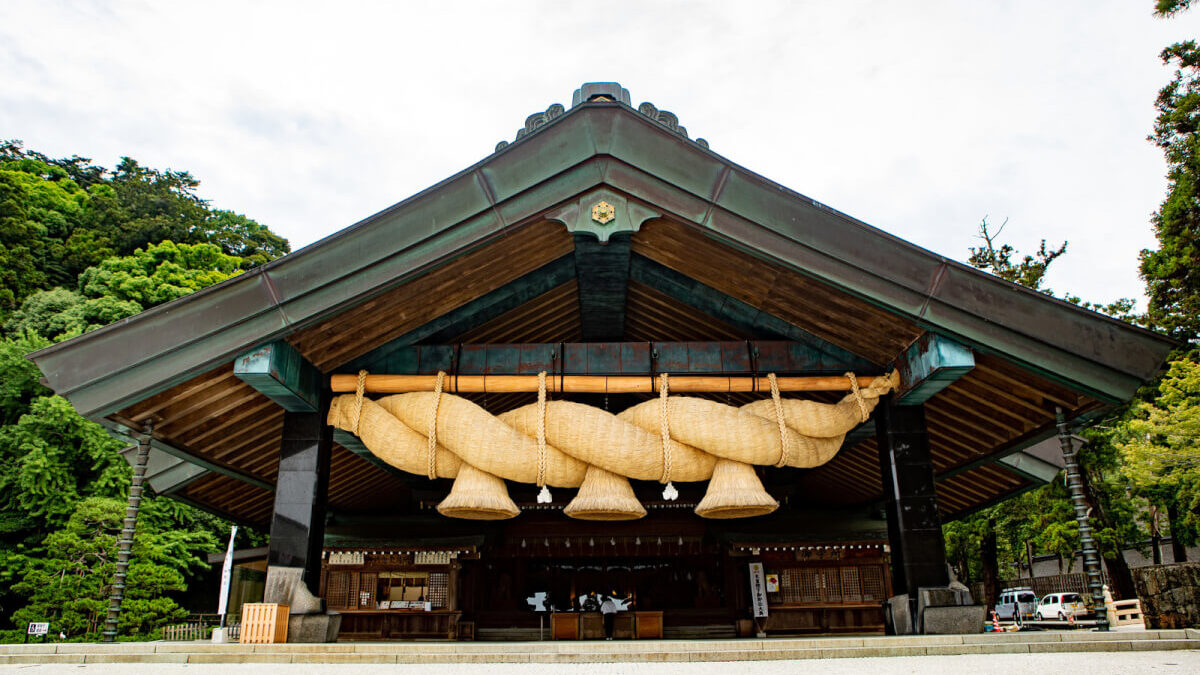
Together with June, October is another month that contains the “無” kanji in its Japanese name. However, unlike June, “無” means “without” in this case, implying that October is a month without Gods (“神” in Japanese). It was widely believed that Gods across Japan get together at this time of the year at the Izumo Grand Shrine (出雲大社), one of the most important Shinto shrines in Japan which is situated in Shimane prefecture. This leaves the rest of Japan without gods through this time!
11. Shimotsuki / November (霜月)
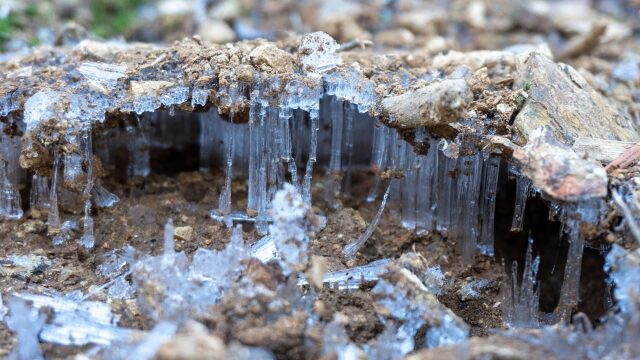
November is referred to as “Shimotsuki” in the old Japanese calendar. “霜” means frost, which is a common phenomenon during this time of the year that can be witnessed on chilly mornings. As the old calendar is around one month ahead of the present-day one, Shimotsuki falls into the time period of late November to the beginning of January.
12. Shiwasu (師走) / December


It may surprise you that Shiwasu is another name for December, which is the only one among all the 12 months that doesn’t have the kanji “月” (meaning month) contained within it. “師” is used to refer to teachers and mentors. In this case, however, it is used to describe Buddhist monks who were busy taking care of visitors and hosting ritual events during this time of year. “走” means running, which ties into this idea of monks getting around in a hurry.
Back in the olden days, Japanese people named each month based on their respect or belief for nature and natural phenomena, like seasons, which were strongly associated with their daily life.If you know a little about the Japanese climate, you might think why June was described as the month without no water, whereas it is today the month of the rainy season (tsuyu) in Japan. This can be explained by the fact that the old Japanese solar calendar was about a month behind the European calendar. This means that back in the days, minazuki was from July 7th to August 7th, the period without rain! We can feel the seasonal changes from the kanji used in each name to symbolize the meaning of it. While this custom is mainly used in Japan, it reminds us of the importance of appreciating the natural beauty of each month!
Japan Wonder Travel Tours
Japan Wonder Travel is a travel agency that offers guided tours throughout Japan.
From private walking tours to delicious Food and Drink tours, we can help you organize the best tours just for you! If you want to explore Japan and learn more about the history and backstories of each area you are visiting, our knowledgeable and friendly English speaking guides will happily take you to the best spots!
In addition, we can provide you with any assistance you may need for your upcoming trip to Japan, so please feel free to contact us if you have any questions or need some help!
▶Tokyo Tsukiji Fish Market Food and Drink Tour
Explore the most lively and popular fish market in Tokyo and try some of the local’s favorite street foods and sake with one of our friendly and knowledgeable English speaking guides!

▶Tokyo 1–Day Highlights Private Walking Tour (8 Hours)
There’s no better way to explore an area than taking a tour with a knowledgeable local guide. You will have the chance to learn about the history and interesting background stories of Tokyo, as well as discover some hidden gems which can be hard to do without a guide.

▶Mt. Fuji Day Trip Bus Tour from Tokyo
Experience the breathtaking views of Mt. Fuji by visiting the highlights of the area on our guided sightseeing bus tour! Departing from Shinjuku in central Tokyo, you can travel comfortably to all of the best spots in the area by bus.

▶Kyoto Private Full Day Walking Tour
On this full-day private tour of Kyoto, you will be able to see the highlights of Kyoto in just one day and at the same time develop a deeper understanding of both the culture of the area and Japan as a whole.

Follow us on Instagram, Facebook, Twitter, and TikTok for more travel inspiration. Or tag us to get featured!
Happy traveling!
Subscribe to our newsletter!
